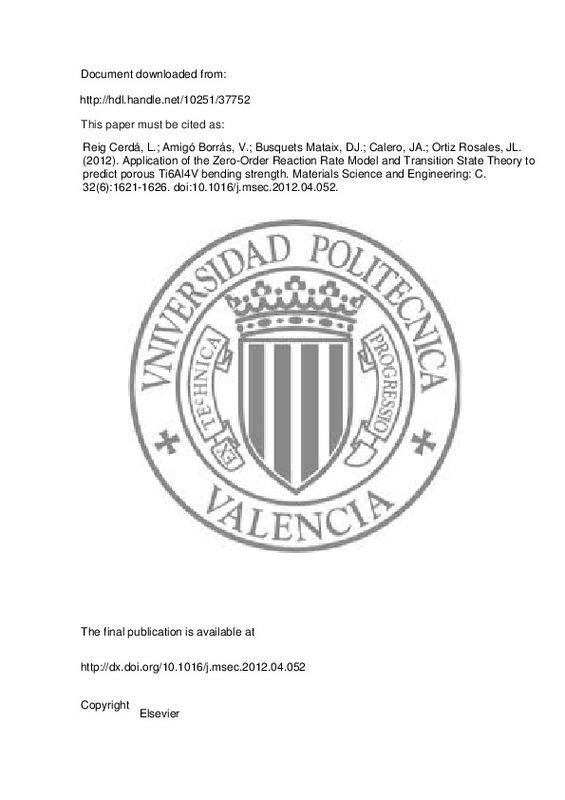JavaScript is disabled for your browser. Some features of this site may not work without it.
Buscar en RiuNet
Listar
Mi cuenta
Estadísticas
Ayuda RiuNet
Admin. UPV
Application of the Zero-Order Reaction Rate Model and Transition State Theory to predict porous Ti6Al4V bending strength
Mostrar el registro completo del ítem
Reig Cerdá, L.; Amigó Borrás, V.; Busquets Mataix, DJ.; Calero, JA.; Ortiz Rosales, JL. (2012). Application of the Zero-Order Reaction Rate Model and Transition State Theory to predict porous Ti6Al4V bending strength. Materials Science and Engineering: C. 32(6):1621-1626. https://doi.org/10.1016/j.msec.2012.04.052
Por favor, use este identificador para citar o enlazar este ítem: http://hdl.handle.net/10251/37752
Ficheros en el ítem
Metadatos del ítem
| Título: | Application of the Zero-Order Reaction Rate Model and Transition State Theory to predict porous Ti6Al4V bending strength | |
| Autor: | Reig Cerdá, Lucía Calero, José Antonio Ortiz Rosales, José Luis | |
| Entidad UPV: |
|
|
| Fecha difusión: |
|
|
| Resumen: |
Porous T16Al4V samples were produced by microsphere sintering. The Zero-Order Reaction Rate Model and Transition State Theory were used to model the sintering process and to estimate the bending strength of the porous ...[+]
|
|
| Palabras clave: |
|
|
| Derechos de uso: | Reserva de todos los derechos | |
| Fuente: |
|
|
| DOI: |
|
|
| Editorial: |
|
|
| Versión del editor: | http://dx.doi.org/10.1016/j.msec.2012.04.052 | |
| Código del Proyecto: |
|
|
| Agradecimientos: |
The authors are grateful to the Spanish Ministerio de Ciencia e Innovacion for supporting this study through project PET2008_0158_02. The translation of this paper was funded by the Universidad Politecnica de Valencia and ...[+]
|
|
| Tipo: |
|







![[Cerrado]](/themes/UPV/images/candado.png)


